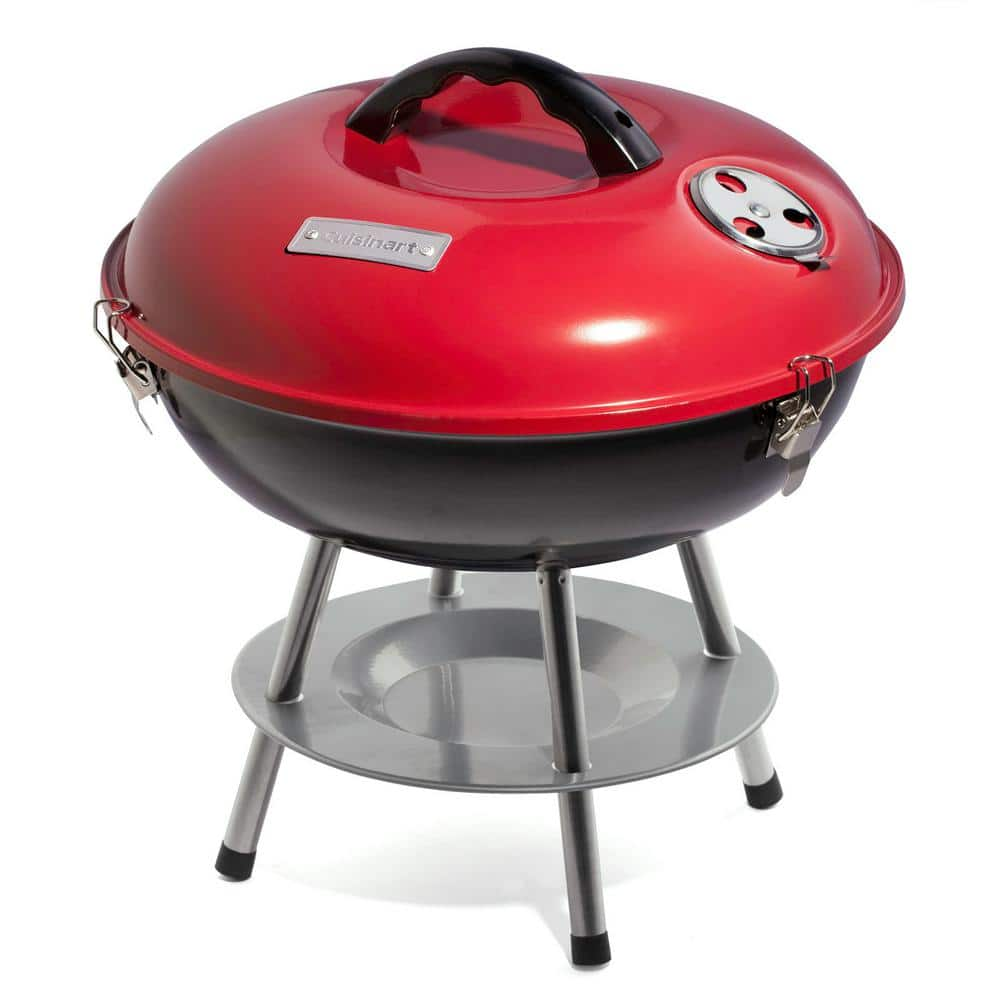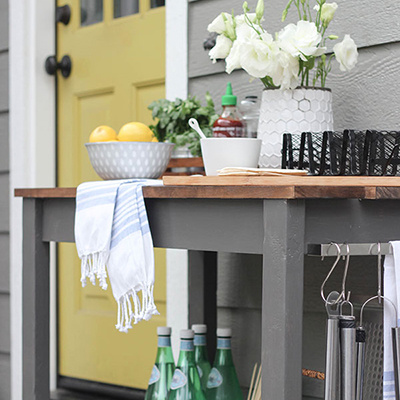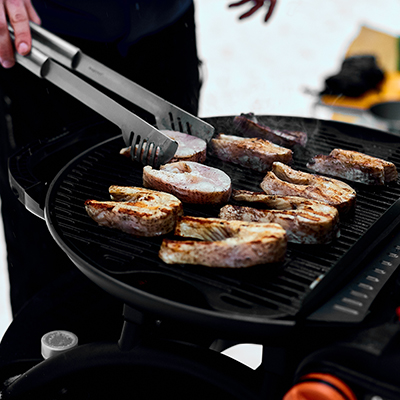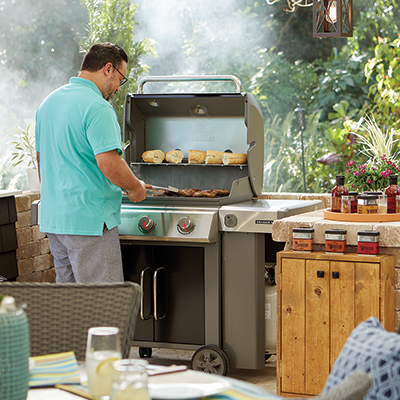Charcoal Grill Buying Guide
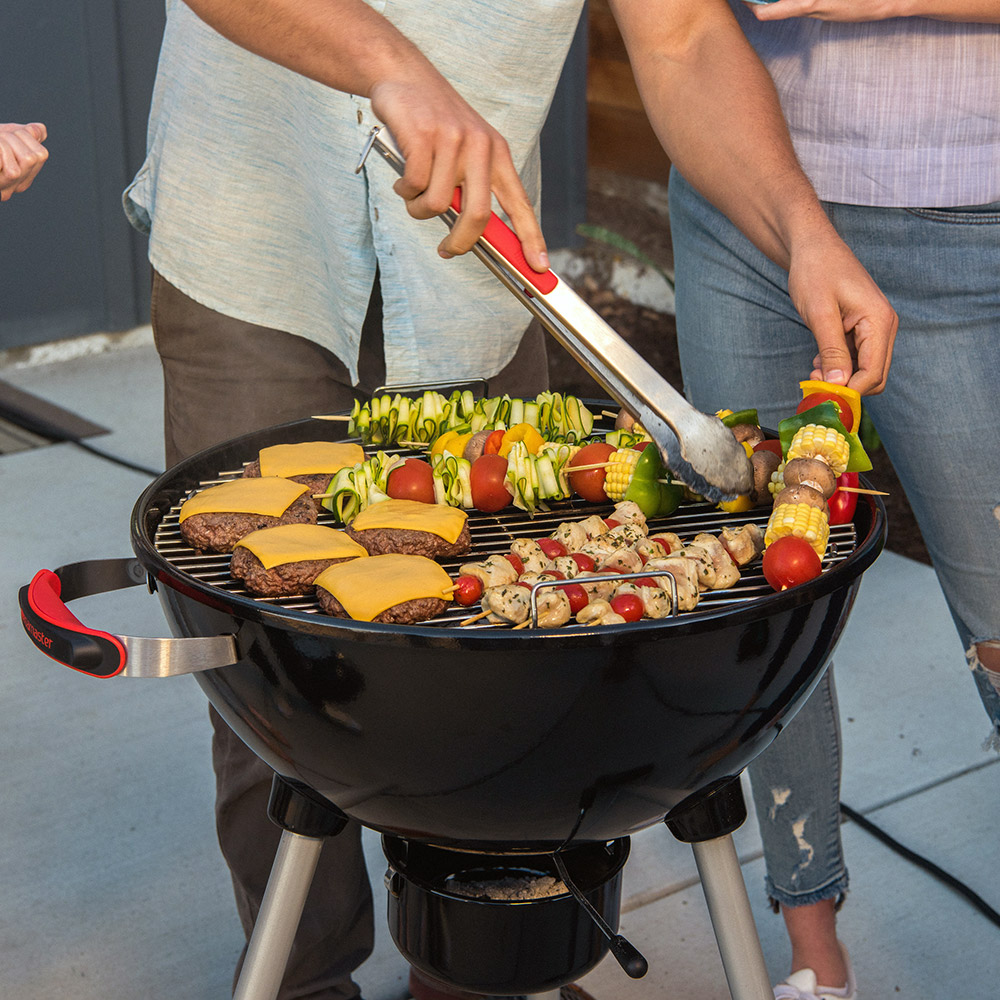
Last updated September 7, 2023
Grilling food over charcoal is a ages-old tradition. Backyard barbecue cookouts, tailgate parties and warm weather picnics are ideal ways to put your charcoal grill to use. This charcoal grill guide reviews the different types of charcoal grills and their features, as well as different fuel options.
Table of Contents
Pros and Cons of Charcoal Grills
Kettle Charcoal Grills
Barrel Charcoal Grills
Ceramic Charcoal Grills
Charcoal Grill Fuel Types
Charcoal Grill Grates
Pros and Cons of Charcoal Grills
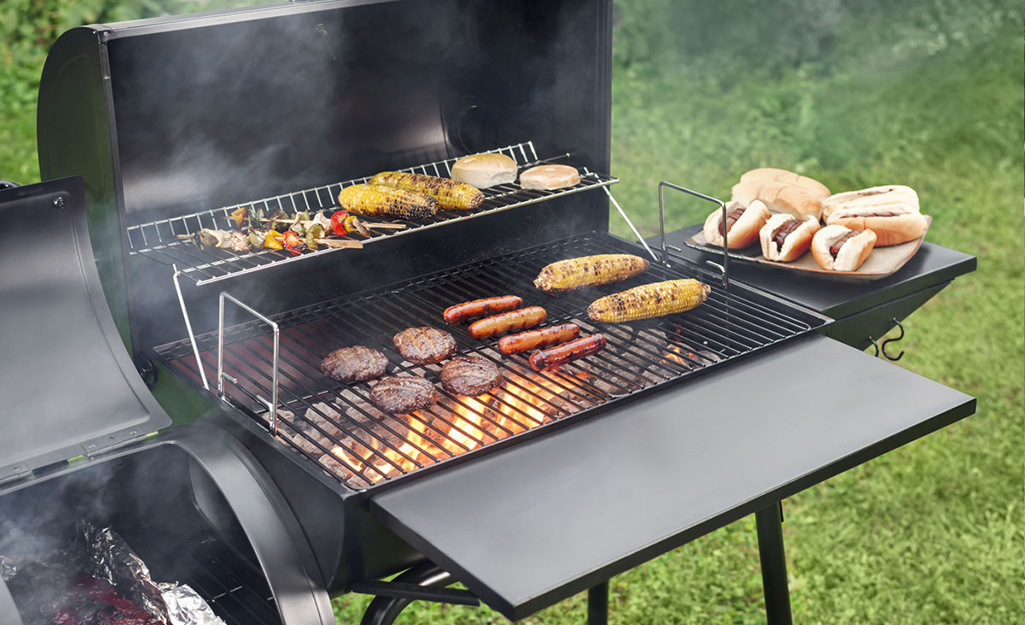
Charcoal grills tend to be the least expensive type of outdoor grill, and many backyard chefs champion the smoky flavor charcoal brings to grilled meat and other foods. They also tend to be more portable than other types of grills.
Most charcoal grills are designed to provide a hot, direct zone on the grill for searing and browning, as well as a cooler, indirect grilling zone for food to cook more slowly.
Charcoal tends to heat up more slowly and require more extensive cleaning after use.
Charcoal grills can cook at temperatures of up to 700 degrees Fahrenheit, but lack the precise temperature controls of gas or electric grills.
The main types of charcoal grills are kettle grills, barrel grills and ceramic grills, all of which are capable of grilling, barbecuing and smoking.
You'll also want to choose between a pedestal or cart for housing your grill.
Kettle Charcoal Grills
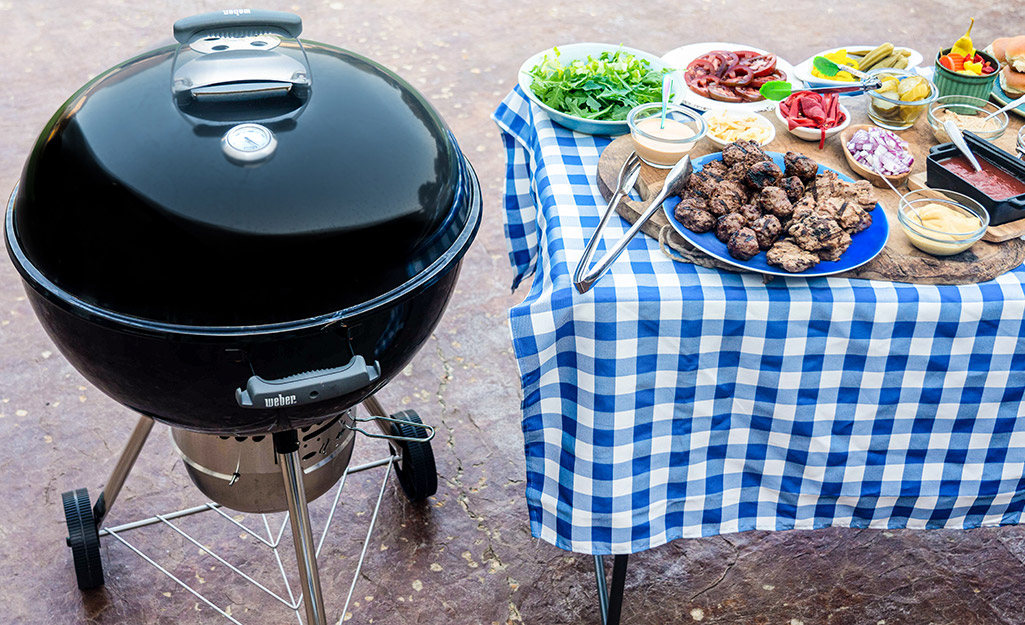
A kettle grill can be the least expensive and smallest type of charcoal grill. It tends to have a round shape with a defined bowl to contain the coals, designed for high heat retention. It's also the most portable grill.
The smaller grilling surface of kettle charcoal grills makes them convenient for smaller groups and faster cooking times, but they may be less suitable for large gatherings.
Barrel Charcoal Grills
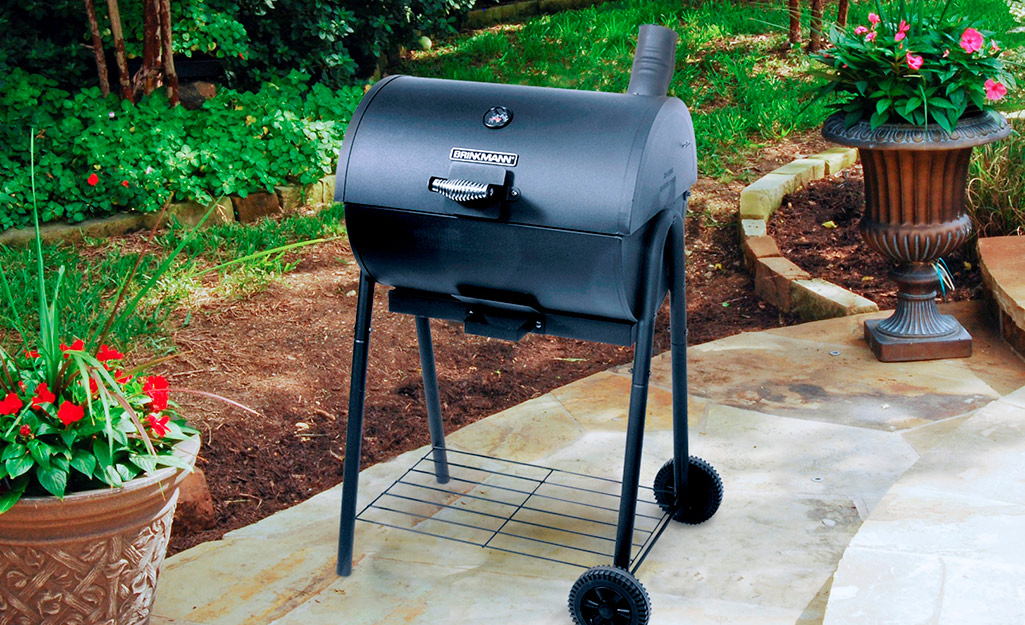
A barrel grill, as the name suggests, has a barrel-shaped design that gives it a larger cooking area than most kettle grills, making it more suitable for large groups or grilling different types of food at once. It's also more effective for smoking and slow cooking.
Barrell grills tend to be more expensive and less portable.
Ceramic Charcoal Grills
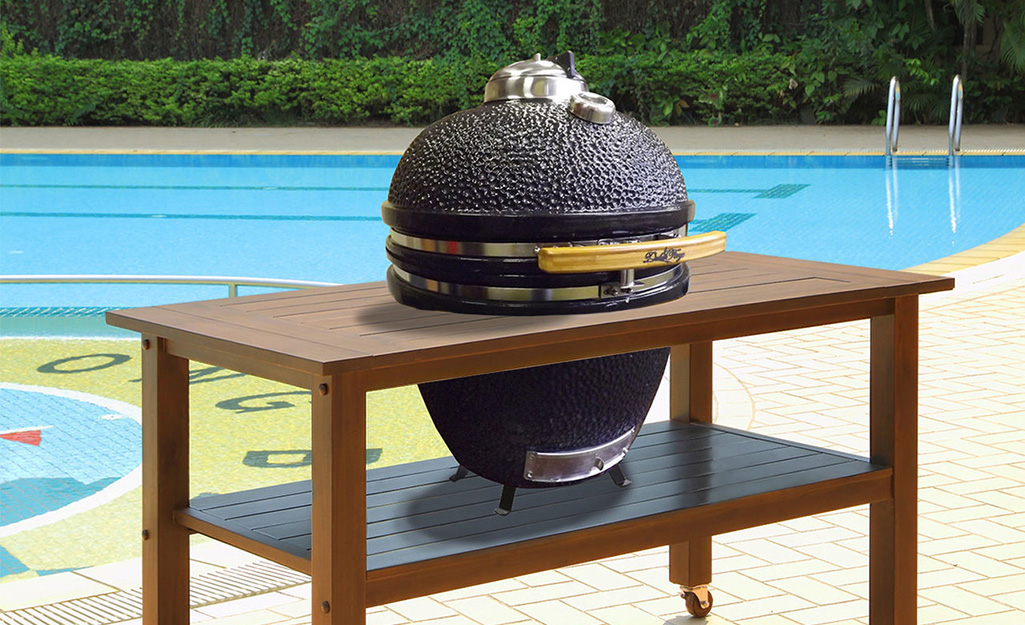
Also called kamado grills after a type of Japanese stove, ceramic grills usually have a familiar egg shape designed for efficient heat retention and regulation. They tend to heat up more quickly and have the flexibility for cooking and smoking many different types of food, including pizza and paella.
They can be the most expensive type of grills, but are also highly durable and weather resistant. They vary in size, but the ceramic walls make even the smaller ones relatively heavy and not easily portable.
Charcoal Grill Fuel Types
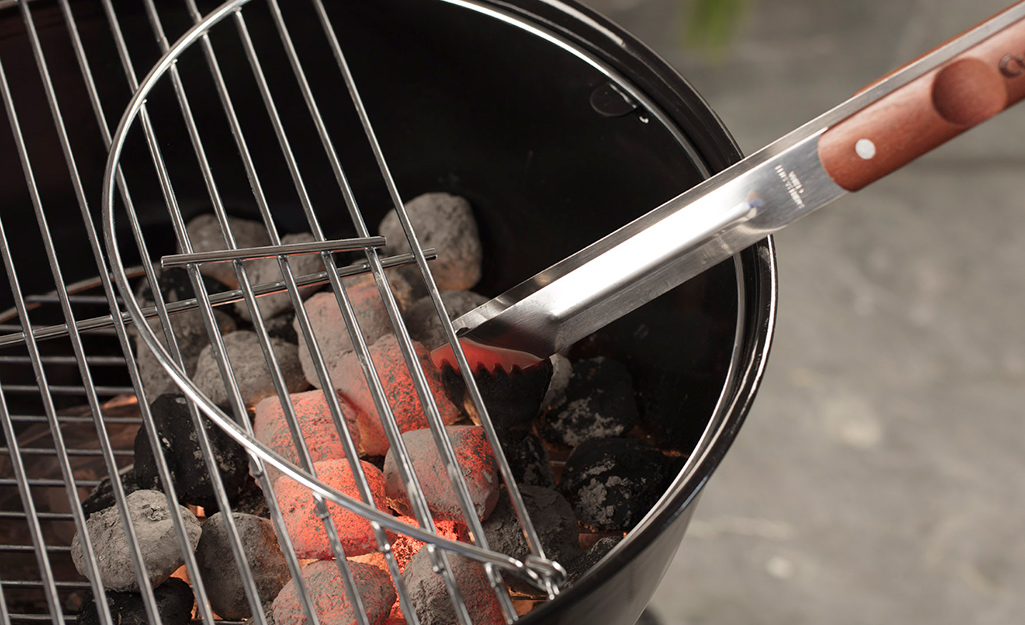
Charcoal grills use two different kinds of fuel, charcoal briquettes and lump charcoal.
- Charcoal briquettes have a familiar, pillowy shape and tend to be uniform in size, which makes them easy to stack and arrange as a smooth bed of hot coals. This also makes it easier for recipes to specify how many briquettes to use.
- Lump charcoal burns extremely hot and quickly, which makes for effective searing, but can require the addition of more fuel over time. It tends to have irregular shapes and sizes. Some types of lump charcoal are made entirely of a single kind of wood, such as mesquite or oak, making them ideal for smoking.
Tip: A combo or hybrid grill is designed to use both charcoal and natural gas or propane.
Charcoal Grill Grates
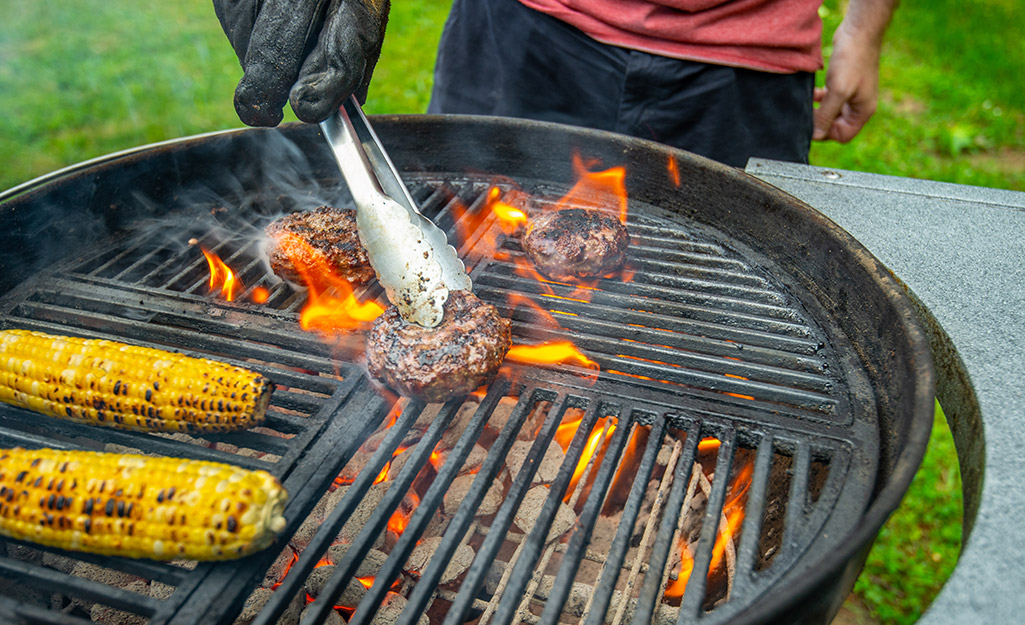
All grills have grates as their cooking surfaces, made of such materials as steel, porcelain and cast iron.
- Steel and stainless steel grates tend to be the least expensive, but also the least durable. They’re also the most likely to chip, although stainless steel lasts longer and has better no-stick properties than plain steel.
- Porcelain-coated grates have a mid-range price, but also have a tendency to chip, and should not be cleaned with metal scrapers.
- Cast iron grates are the heaviest, most durable and most efficient at heat distribution and retention. They can cook more quickly, but tend to be the most expensive, and require more maintenance than other grates.
Charcoal Grill Features

Consider the different features of charcoal grills when choosing the one that suits your needs.
- The lid needs to fit tightly in order to keep as little heat from escaping as possible.
- The dampers or air vents are designed to release exhaust, let oxygen in and regulate the temperature.
- Built-in thermometers, particularly digital thermometers, are extremely helpful in gauging cooking time.
- Hinged grates or side charcoal doors can make it easier to add more fuel.
- Removable ash catchers make it easier to clean out the grill.
- With folding shelf charcoal grills, the front or side shelves can be folded to make storage or transportation easier. With fixed shelf charcoal grills, the front or side shelves remain in place.
Choose among the types of charcoal grills based on how much and what kind of cooking you expect to do. Compared to the more precise settings of other fuel types, grilling over charcoal can require a little more experience and artistry, which has inspired a charcoal grill culture. The Home Depot Mobile App makes it easy for you to compare the types of grills or find accessories.
